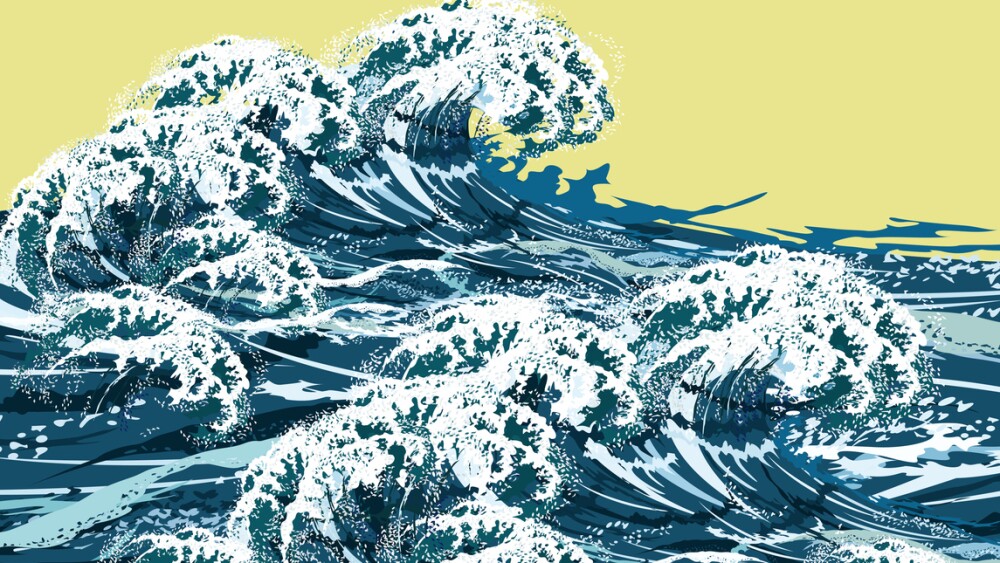Mannheim/Wetzlar, Germany. Leica Microsystems congratulates Stefan W. Hell, Eric Betzig, and William E. Moerner, who have been awarded this year's Nobel Prize in Chemistry for the development of super-resolved fluorescence microscopy. Stefan Hell is specifically honored for the principle that enables STED (STimulated Emission Depletion) microscopy. In collaboration with Leica Microsystems, this principle was translated into the first commercially available STED microscope, whose latest generation is now the Leica TCS SP8 STED 3X. Eric Betzig and WilliamMoerner are honored for the single-molecule microscopy method, the physical principles of which underpin the GSDIM (ground state depletion followed by individual molecular return) super-resolution microscope Leica SR GSD 3D. Awarding this year's Nobel Prize to Hell, Betzig and Moerner emphasizes the importance of super-resolution live cell light microscopy in virus, cancer and neuroscience research.
Stefan Hell's developments of 4Pi and STED microscopy were turned into the first commercial super-resolution microscopes by Leica Microsystems in 2004 and 2007. His good relationship with the engineers and scientists at Leica Microsystems dates back to his time as a PhD student and built the basis of more than 15 years of fruitful collaboration for the development of the super-resolution microscopes.
Marcus Dyba who developed the first STED microscope during his PhD thesis in Stefan Hell's lab and is now a project leader for the development of super-resolution technologies at Leica Microsystems says: "I am happy that the Nobel Committee recognizes the pioneering work of Stefan Hell, because this really triggered a revolution in light microscopy. I often think back to the exciting times in which I myself have conducted research in his laboratories on the STED method. Even back then, Leica Microsystems was a major enthusiastic partner who was always very open-minded to risky innovations."
With the Leica TCS SP8 STED 3X and Leica SR GSD 3D, Leica Microsystems is the only company offering super-resolution technologies, which are underpinned by this year's Nobel Prize for Chemistry. Super-resoution microscopy allows to study subcellular architecture and cell dynamics at the nano-scale. STED microscopy breaks the diffraction limit by downscaling the spot where fluorescence is generated and provides fast and direct, purely optical super-resolution fast enough for live cell imaging and without need of additional data processing. Leica Microsystems has continuously improved the performance of STED, adding continuous wave laser beams (STED CW), the gating functionality (gated STED) and increasing resolution also in 3 dimensions (STED 3X) and over the whole spectrum of visible light. A novel pulsed STED laser at the Leica TCS SP8 STED 3X even reduces resolution down to 30 nm utilizing the 775 nm wavelength.
In localization microscopy, the determination of the exact position of a fluorochrome is based on the principle of temporal separation of fluorochromes between on and off states followed by a sequential readout. A super-resolution image is reconstructed from thousands of frames. Leica Microsystems also advanced GSDIM technology: The Leica SR GSD 3D offers widefield super-resolution in 3 dimensions with the highest precision.
Tanjef Szellas, Director for Compound Microscopy, who started his career at Leica Microsystems as application specialist for 4Pi microscopy and product manager for STED, has been involved in the collaboration with Stefan Hell from the very beginning comments: "The topic of super-resolution has driven light microscopy to new levels of resolution. Leica Microsystems took a risk with the initial commercialization 10 years ago and our success has been what we hoped for, but it was by no means certain. It makes me proud to have been part of this development."
Also watch the video interview with Stefan Hell, in which he gives some personal insights into the success story of super-resolution microscopy: http://www.leica-microsystems.com/science-lab/video-interview-with-stefan-hell-the-inventor-of-super-resolution/
More information on Leica Microsystems' super-resolution products you can find here:
http://www.leica-microsystems.com/products/super-resolution-microscopes/
http://www.leica-microsystems.com/science-lab/sted-publication-list/
http://www.leica-microsystems.com/science-lab/gsdim-publication-list/
_ _ _ _ _ _ _ _ _ _ _ _ _ _ _
Leica Microsystems is a world leader in microscopes and scientific instruments. Founded as a family business in the nineteenth century, the company's history was marked by unparalleled innovation on its way to becoming a global enterprise.
Its historically close cooperation with the scientific community is the key to Leica Microsystems' tradition of innovation, which draws on users' ideas and creates solutions tailored to their requirements. At the global level, Leica Microsystems is organized in three divisions, all of which are among the leaders in their respective fields: the Life Science Division, Industry Division and Medical Division.
The company is represented in over 100 countries with 6 manufacturing facilities in 5 countries, sales and service organizations in 20 countries, and an international network of dealers. The company is headquartered in Wetzlar, Germany.
____________________________________________ Anja Schué / Claudia Müller / Natalie Hampl Global Marketing and Communications
Ernst Leitz Strasse 17-37 | 35578 Wetzlar (Germany)
Tel. +49 6441 29 - 2201 / - 2630 / - 2621 |
Fax +49 6441 29 - 2527
www.leica-microsystems.com/science-lab
www.facebook.com/LeicaMicrosystems
www.twitter.com/LeicaMicro
www.linkedin.com/company/leica-microsystems ____________________________________________
Help employers find you! Check out all the jobs and post your resume.
Stefan Hell's developments of 4Pi and STED microscopy were turned into the first commercial super-resolution microscopes by Leica Microsystems in 2004 and 2007. His good relationship with the engineers and scientists at Leica Microsystems dates back to his time as a PhD student and built the basis of more than 15 years of fruitful collaboration for the development of the super-resolution microscopes.
Marcus Dyba who developed the first STED microscope during his PhD thesis in Stefan Hell's lab and is now a project leader for the development of super-resolution technologies at Leica Microsystems says: "I am happy that the Nobel Committee recognizes the pioneering work of Stefan Hell, because this really triggered a revolution in light microscopy. I often think back to the exciting times in which I myself have conducted research in his laboratories on the STED method. Even back then, Leica Microsystems was a major enthusiastic partner who was always very open-minded to risky innovations."
With the Leica TCS SP8 STED 3X and Leica SR GSD 3D, Leica Microsystems is the only company offering super-resolution technologies, which are underpinned by this year's Nobel Prize for Chemistry. Super-resoution microscopy allows to study subcellular architecture and cell dynamics at the nano-scale. STED microscopy breaks the diffraction limit by downscaling the spot where fluorescence is generated and provides fast and direct, purely optical super-resolution fast enough for live cell imaging and without need of additional data processing. Leica Microsystems has continuously improved the performance of STED, adding continuous wave laser beams (STED CW), the gating functionality (gated STED) and increasing resolution also in 3 dimensions (STED 3X) and over the whole spectrum of visible light. A novel pulsed STED laser at the Leica TCS SP8 STED 3X even reduces resolution down to 30 nm utilizing the 775 nm wavelength.
In localization microscopy, the determination of the exact position of a fluorochrome is based on the principle of temporal separation of fluorochromes between on and off states followed by a sequential readout. A super-resolution image is reconstructed from thousands of frames. Leica Microsystems also advanced GSDIM technology: The Leica SR GSD 3D offers widefield super-resolution in 3 dimensions with the highest precision.
Tanjef Szellas, Director for Compound Microscopy, who started his career at Leica Microsystems as application specialist for 4Pi microscopy and product manager for STED, has been involved in the collaboration with Stefan Hell from the very beginning comments: "The topic of super-resolution has driven light microscopy to new levels of resolution. Leica Microsystems took a risk with the initial commercialization 10 years ago and our success has been what we hoped for, but it was by no means certain. It makes me proud to have been part of this development."
Also watch the video interview with Stefan Hell, in which he gives some personal insights into the success story of super-resolution microscopy: http://www.leica-microsystems.com/science-lab/video-interview-with-stefan-hell-the-inventor-of-super-resolution/
More information on Leica Microsystems' super-resolution products you can find here:
http://www.leica-microsystems.com/products/super-resolution-microscopes/
http://www.leica-microsystems.com/science-lab/sted-publication-list/
http://www.leica-microsystems.com/science-lab/gsdim-publication-list/
_ _ _ _ _ _ _ _ _ _ _ _ _ _ _
Leica Microsystems is a world leader in microscopes and scientific instruments. Founded as a family business in the nineteenth century, the company's history was marked by unparalleled innovation on its way to becoming a global enterprise.
Its historically close cooperation with the scientific community is the key to Leica Microsystems' tradition of innovation, which draws on users' ideas and creates solutions tailored to their requirements. At the global level, Leica Microsystems is organized in three divisions, all of which are among the leaders in their respective fields: the Life Science Division, Industry Division and Medical Division.
The company is represented in over 100 countries with 6 manufacturing facilities in 5 countries, sales and service organizations in 20 countries, and an international network of dealers. The company is headquartered in Wetzlar, Germany.
____________________________________________ Anja Schué / Claudia Müller / Natalie Hampl Global Marketing and Communications
Ernst Leitz Strasse 17-37 | 35578 Wetzlar (Germany)
Tel. +49 6441 29 - 2201 / - 2630 / - 2621 |
Fax +49 6441 29 - 2527
www.leica-microsystems.com/science-lab
www.facebook.com/LeicaMicrosystems
www.twitter.com/LeicaMicro
www.linkedin.com/company/leica-microsystems ____________________________________________
Help employers find you! Check out all the jobs and post your resume.




